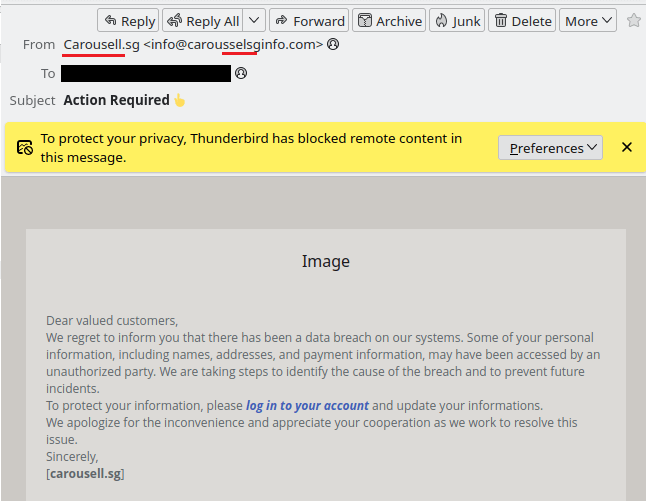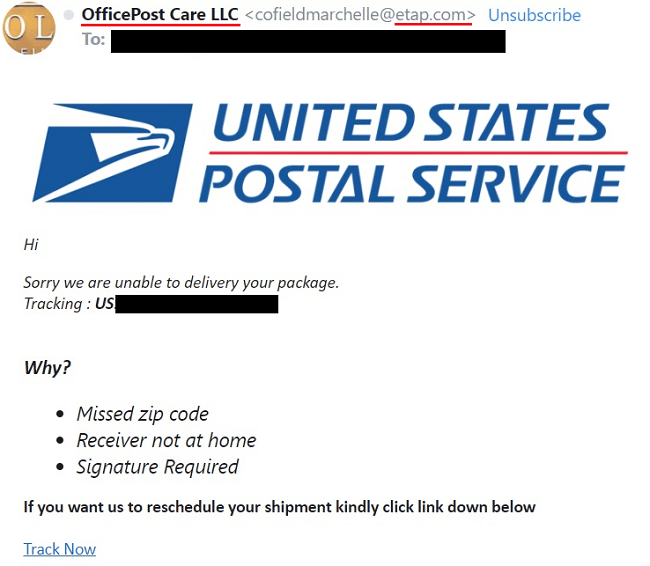What is “T-Mobile Network Global Funds Relief” Email Spam
Subject: Congratulations! YOUR EMAIL, HAVE WON (?1000,000.00.)
Headquarters T/Mobile (U.K) LtdMosquito Way Hatfield Business ParkHatfield Hertfordshire AL 10 -9BWHeadquarters U.K: + 44-795-3966-150U.S.A Regional Office: +1-84442 89675Email:- tmobileukfundrelief@yandex.comWebsite: www.t/mobile.com
Admin Head Office winning Notification!Congratulations! Your email, Address was automatically generated randomly among other lucky winners, therefore you have won the Sum of (Ѓ’1000,000.00.) in T-Mobile Network, Global funds Relief, Held in UK through the Computer Ballots program, your fund remains unclaimed. This program is to eradicate and to alleviate poverty, (Worldwide.) Payment reference number is (BTA/05RSA) kindly contact your payment Unit for pay-out, Mrs. Mary or Mr. Brown your claim agent in South Africa: Tel: +27(0) 655-654-154You are advice tofollow the instruction below to enable us affect your immediate transfer, we have two options of pay-out, (EFT Bank to Bank Transfer and Prepaid Master Debit ATM Card) which can be issued out in your Name, and be posted directly to your address via DHL or any order courier service, indicate your preferable option below. Bank to Bank Transfer takes 48 to 72 working hours while Debit Master ATM Card Delivery takes 5 to 6 working days. Endeavour to keep your payment reference number very confidential. Provide the following to your representative agent.EFT Bank Transfer Details! Master Debit ATM Card Details.Your Name and Surname: --------- C, -- Your Name and Surname: ----------Contact Phone Number: ----------- H, --Residential Address: ------------------Your Bank Name: -------------------- E, -- Or Office Address: ---------------------Account Number: ------------------- Q, - Country City/Province Code: --------Branch Code: ------------------------- U, - Contact Phone Number: -------------Swift; Code: -------------------------- E, - I.D or Passport Copy: ------------------Your Occupation: ------------------- S - youre Occupation: ---------------------RegardsT/Mobile TeamTel: +27(0) 655-654-154Fax: +27(0) 864-749-207Email: tmobileukfundrelief@yandex.com
T-Mobile Network Global Funds Relief email spam is a type of phishing scam that targets individuals by promising them access to financial relief or funds from T-Mobile Network. These emails are designed to trick recipients into providing personal information, such as bank account details or social security numbers, in order to access the supposed funds. In reality, there are no funds being offered by T-Mobile Network, and the scammers behind these emails are simply looking to steal sensitive information from unsuspecting victims.
T-Mobile Network Global Funds Relief spam campaigns typically infect computers through malicious attachments or links included in the email. Once a recipient clicks on the attachment or link, malware is downloaded onto their device, allowing the scammers to gain access to personal information stored on the computer. This can lead to identity theft, financial loss, and other serious consequences for the victim. It is important to be cautious when receiving emails claiming to offer financial relief, especially if they are not from a trusted source like T-Mobile Network. Interacting with T-Mobile Network Global Funds Relief email scam can put your personal and financial information at risk, so it is best to delete these emails and report them as spam to protect yourself and others from falling victim to this scam.

How to stop email spam like “T-Mobile Network Global Funds Relief”
You can use an anti-spam filter which will block most known sources of spam before they even reach your inbox. MailWasher is a program you may try. It filters spam and lets you preview emails on a server without downloading them onto your computer. MailWasher has customizable spam filters, uses bayesian filtering and works with all major email programs: Outlook, Outlook Express, Thunderbird, GMail, etc.
Types of spam email
Spam email messages can be approximately divided into three categories: those that prompt you to download and run something, those that ask for your personal data, and those asking you to make payments. Let’s take a closer look at each one so we can better protect ourselves from these scams.
-
Emails with attachments
In the first case the email contains an attachment which it prompts you to open. Those attachments may consist of executable files or they may be Microsoft Word or Excel documents containing malicious macro scripts. Once you launch the executable file or allow the document to run its macros, malware downloads onto your device and wreaks all kinds of havoc with it.
The malware may range from adware showing extra ads on your browsers to ransomware that encrypts your files and aks for payment to decrypt them.
-
Phishing emails
The second type of spam (phishing emails) try to trick you into entering your name, logins, passwords, credit card details, etc. on what you think are legitimate and respectable websites.
Those emails usually pretend to be messages from well-known websites that you are probably registered on, and prompt you to follow a link to their site for some reason (for example, there is something wrong with your account). The provided link leads to fake site of course, and the data you enter ends up in the hands of cybercriminals.
-
Advance-fee scam and sextortion scam emails
Finally there are the emails urging people make payments. These can be further divided into two types: the first type, asking people to invest into something, to pay some money now and get back much more later (the advance-fee scam); the second one, scaring people into paying to prevent something bad from happening.
An example of the first one is the well-known Nigerian Prince email. A example of the second is sextortion scam: emails that claim that the email author has access to the victims’s web cam and has the victims intimate videos, which the criminal threatens to publish unless paid off.

How to find out that the email is scam

- Check the sender’s address – if the address doesn’t match up with what you expect from that company, then it’s very likely that the email is scam. Be aware though that the sender address can be faked, so if the address looks legitimate it is not guaranteed that the email is legit.
- Look for spelling and grammar mistakes and weird phrasing – real emails from reputable companies are far less likely to have those.
- Watch for urgent requests – legitimate companies will never ask customers for sensitive information such as credit card numbers via email, so if an email suddenly asks for urgent action like requesting payment details within few hours, chances are high this could potentially be a scam attempt.
How to protect yourself from email scam
- Use an email filtering service – email filtering services like MailWasher Pro allow you to filter out unwanted messages before they reach your inbox. These services use sophisticated algorithms to identify suspicious content in incoming emails and block them automatically so that only legitimate messages make it through the filter.
- Avoid clicking on suspicious links – if you receive an email with a link that looks suspicious, do not click on it! Even if the sender appears familiar, chances are high that the link is malicious and could lead you down a path of malware infection or identity theft. It is best not to open any unknown links at all.
- Don’t respond directly – never reply directly to spam emails as this will confirm for spammers that your address is active which may result in more unsolicited mail being sent your way. Instead, mark these messages as “Spam” within your email client/service provider so that their filters can better detect similar types of mail next time.
- Keep software up-to-date – make sure all software installed onto devices such as computers and smartphones is kept up-to date with latest security patches released by developers; this helps reduce risk posed by cyber criminals who exploit vulnerabilities found in outdated versions of programs including email clients.
- Use anti virus protection – install reputable antivirus solutions onto any device receiving emails; most modern day anti viruses come equipped with advanced features such as real time scanning which help detect potential threats immediately upon opening files attached to emails.
